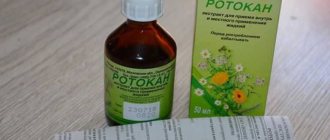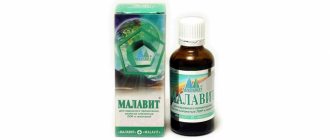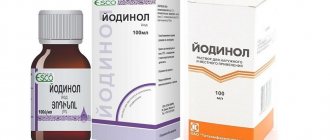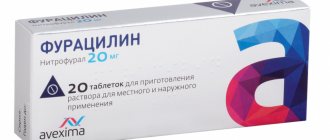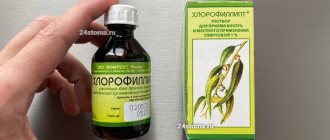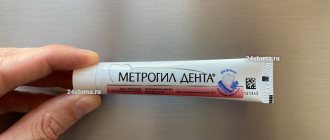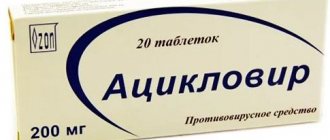Home / Articles / What to do after tooth extraction
A tooth was removed: what to do now?
Unfortunately, the procedure for removing teeth is unpleasant, but there is no escape from it. How to avoid complications and negative reactions after tooth extraction?
After a tooth is removed, a hole is formed in its place, which is gradually filled with blood (this is a protective function of the body). Over time, the blood coagulates and turns into a clot, which should completely cover the bone that has become unprotected after tooth extraction. Over the course of several months, the blood is absorbed and healthy bone tissue remains in its place. If the bone and gums sag a little at the site of the extracted tooth, this is normal. Most often, the healing process proceeds without complications, without causing any pain or discomfort to the patient. In some cases, fever, aching pain, prolonged healing, systematic visits to the dentist and other side effects are possible.
Pharmacodynamics and pharmacokinetics
Iodine-containing antiseptic . The antiseptic effect is provided by molecular iodine. During the treatment of the skin, the resorptive effect of iodine is manifested: it enhances metabolism , accelerates dissimilation , has a proteolytic effect, and takes part in the process of synthesizing the hormones T3 and T4 .
Under the influence of ethanol , the excretion of iodine slows down and its irritating effect on tissues decreases. A bactericidal effect against gram-positive flora, streptococci , Protea , Escherichia coli and most gram-negative bacteria .
The drug affects the vital activity of yeast and pathogenic fungi , and has a detrimental effect on the spores of anthrax . Pseudomonas aeruginosa is resistant to iodine . The medicine is low-toxic.
How to use Iodinol in the treatment of stomatitis?
September 27, 2016, 10:17 Article expert: Daria Dmitrievna Blinova 5.755
- 1 Definition
- 2 Advantages and disadvantages
- 3 Use for stomatitis
- 4 In children
- 5 In adults
- 6 Precautions
- 7 Contraindications
- 8 Side effects
- 9 Analogues
When treating stomatitis, it is most effective to use iodine-based medications. They have a disinfecting effect and can be used in childhood. “Iodinol” for stomatitis is one of the best medicines and, when used correctly, is safe for the patient. If you use the medicine according to the instructions, you can cure inflammation of the oral cavity and nearby tissues in a matter of days.
The drug “Iodinol” is good at eliminating ulcers in the mouth, also providing a general antiseptic effect.
Indications for use
The use of Iodinol in gynecology is limited to antiseptic treatment of the surgical surface.
For myalgia , injuries, infectious and inflammatory lesions of the skin, the medication is used externally.
For varicose and trophic ulcers , chemical and thermal burns of I-II degree, purulent otitis media , chronic tonsillitis and atrophic rhinitis , it is used topically. For tertiary syphilis atherosclerosis , it is possible to use the medicine internally.
Iodinol for rinsing
In their practice, otolaryngologists often use Iodinol as a rinse. You just need to keep in mind that rinsing is not carried out with a pure solution, but with a prepared mixture of several drops. This procedure ensures the treatment of the tonsils. For chronic tonsillitis of any etiology, such rinsing allows you to relieve the severity of inflammation and wash off the pathogen from the surface of the porous tissue, disinfecting the surface of the tonsils for a while.
Additionally, iodine heating procedures may be prescribed. They involve applying the solution directly to the tonsils. Iodine, irritating the surface of the glands, activates blood flow in the capillaries and vessels, due to which the local temperature rises. Harmful microorganisms cannot multiply in such an environment, which contributes to a speedy recovery.
In addition to treating tonsils, Iodinol can be used as a component for preparing a solution for rinsing the nose. This product is also used to disinfect the walls of the respiratory tract and wash away most of the germs from them.
Contraindications
contraindications are known :
- hypersensitivity to iodine ;
- history of allergic responses.
Iodinol can be prescribed to children only from 5 years of age.
For urticaria , chronic pyoderma , adenoma , pulmonary tuberculosis , acne , furunculosis , nephrosis , nephritis , hemorrhagic diathesis, taking the medication orally is contraindicated.
Composition, release form and mechanism of action
The pharmaceutical drug “Iodinol” is produced in the form of a solution, which is used for the treatment of stomatitis in both children and adult patients. The composition contains the active substance - molecular iodine, as well as potassium iodide and polyvinyl alcohol. The solution is in bottles with a volume of 100 milliliters. With the help of the described medication, it is possible to prevent pathogenic microflora from entering the affected areas of the oral mucosa.
“Iodinol” prevents the spread of bacteria that are found in children due to poor hygiene or bad habits, for example, biting nails or eating unwashed food.
Side effect
Taking the solution orally causes increased sweating , rapid heartbeat, nervousness , insomnia , diarrhea (typical for older people), and allergic responses. Application to skin may cause irritation.
Long-term treatment of extensive wound surfaces can lead to iodism (salivation, urticaria, acne, Quincke's edema , lacrimation).
Patient reviews of iodinol
“Iodinol” has been familiar to me since childhood. My mother also used a solution of this remedy and rubbed my throat when I was sick. She made a cotton swab on her finger, soaked it in the solution and smeared it on my throat. This procedure is not pleasant and not every child can handle it! And I make a rinse solution for my children. A few drops per glass of water. I gargle myself in a different proportion - a tablespoon per glass of water. “Iodinol” tastes unpleasant, but the effect is worth it! I didn't notice any side effects. The cost of the drug is a penny, 15 rubles. for 100 ml. The benefits are obvious. I recommend!
I have had experience with Iodinol for a long time. My mother used it when she was a child. Previously, it was just a mesh on the neck and chest area. Now I buy it myself all the time. We always have it in our first aid kit. It is very convenient that at present it is sold in the form of a spray. When my throat starts to hurt, I immediately start spraying it. The best remedy for a sore throat for me! It helps better than all kinds of lollipops and a sea of other remedies. I also spray it on children when the doctor reports a red throat. And sometimes, even when I have a cold, I immediately start spraying it on my children’s necks. So as not to launch. It will not be worse. The price is small. I recommend it.
Instructions for use of Iodinol (Method and dosage)
Locally, Iodinol is used to lubricate the tonsils, apply bandages, and for rinsing.
For the treatment of chronic tonsillitis, regular washing of the supratonsillar spaces and tonsils is recommended.
How to gargle with Iodinol: single dosage – 50 ml, 4-5 rinses daily for three days.
How to dilute Iodinol for gargling : add a solution of the drug to 100 ml of boiled water until the water turns dark yellow. The resulting solution is suitable for rinsing.
Treatment of chronic purulent otitis : for epitympanitis, the attic is washed, and for mesotympanitis, a solution is instilled (5-8 drops per procedure). Duration of therapy is up to 4 weeks.
Therapy for chronic atrophic rhinitis recommends first softening and removing the crusts, and then spraying the nasal cavity and nasopharynx (2-3 times a week, course - 3 months).
For ulcers ( varicose , trophic ), gauze bandages soaked in the solution are applied. Dressing is carried out 2 times a day, each time soaking the gauze with a solution, but without removing it. A week later, a local bath is prescribed, and procedures with gauze bandages are continued until complete healing.
Treatment of infected burns and purulent wound lesions includes the application of a special loose gauze bandage soaked in the drug.
Iodinol: price
The product is sold in glass bottles of 50 ml or 100 ml. Some manufacturers have equipped their bottles with spray nozzles. It is worth keeping in mind that the presence of such a sprayer does not mean that the product is ready for application to the oral cavity or nasal mucous membranes. The nozzle makes it easier to treat the skin area around the wound. Only the presence of a separate footnote in the instructions attached to the bottle can indicate the concentration of the active substance and the permissible use of the solution unchanged for rinsing.
You can buy a 50 ml bottle without a spray nozzle for 30 rubles. Depending on the name of the manufacturer, the price may vary. The presence of a spray bottle affects pricing. With it, a bottle of the same volume will cost from 100 rubles.
Emergency situations after tooth extraction
- If your cheek is swollen. The infection entered the soft tissue and caused periostitis, which led to swelling of the soft tissue. A doctor's examination is required.
- If your gums hurt. In any case, there will be swelling, but if it bothers the patient, it is necessary to visit a doctor.
- If bleeding resumes. When it continues for a long time, it can cause anemia. At the appointment, the doctor may cauterize the bleeding vessel, administer vitamin K preparations, or use a hemostatic sponge.
- If the stitches have clearly fallen apart. No one is immune from such a problem as cutting stitches, because putting them in the mouth is extremely inconvenient. Again, you need to urgently visit a doctor.
What and when can you do after tooth extraction?
Comprehensive hygiene for 2500 rubles! Air Flow 1000p for patients with braces!
A unique promotion for our regular patients! A set of hygienic procedures (removal of tartar and plaque using Air Flow and ultrasound , scaling, polishing, fluoridation) for regular patients once every 6 months for RUB 3,000!
Air Flow and polishing for only RUR 1,500 for patients with braces!
How to rinse your mouth
Rinsing the mouth is both a hygienic and therapeutic procedure. For rinsing, pharmaceutical products, self-prepared decoctions, tinctures, and solutions are used. Ready-made solutions - rotokan, hydrogen peroxide, chlorhexidine, furatsilin, miramistin - have proven antiseptic properties.
Homemade herbal remedies additionally soothe and relieve pain in inflamed tissues.
Below we will talk in detail about drugs that help get rid of stomatitis at home.
What to do after tooth extraction?
- According to the doctor's recommendation, after 15-20 minutes you need to spit out the gauze balls from your mouth. They are usually left if the bleeding from the socket has not completely stopped.
- You should not eat food in the next 2-3 hours. Food injures the hole.
- In addition, you should avoid eating too cold or hot food, steam rooms, saunas, and cold hardening. Sudden temperature changes provoke dilation and constriction of blood vessels, resulting in bleeding and pain. In the same way, alcohol can do this, which also needs to be excluded.
- You will temporarily have to give up aggressive tooth rinses, which can destroy the clot.
- You must try not to injure the blood clot in the socket to avoid inflammation. Most often this happens while brushing your teeth. Of course, it is necessary to brush your teeth after extraction, but only carefully and carefully.
- If your temperature rises after tooth extraction, you should immediately inform your doctor.
How to relieve pain after tooth extraction?
When the effect of the anesthetic begins to wear off, the pain will return. In case of severe pain or a low pain threshold in the patient, it is necessary to take painkillers.
As a rule, non-steroidal anti-inflammatory drugs (diclofenac, voltaren, indamethacin, nimesulide, ibuprofen) are taken, which will also help relieve swelling and inflammation. It is worth remembering that long-term use of these drugs is contraindicated due to a decrease in the number of leukocytes in the blood and complications from the stomach. Most drugs in this group should be taken with omeprazole.
In addition, you can resort to using a topical drug in solution or lozenges: benzydamine hydrochloride (or tantum verde).
How to stop bleeding?
In some cases, if it is not possible to see a doctor, you can stop the bleeding yourself.
- A tight tampon twisted from cotton wool or gauze should be placed on the bleeding hole. Then squeeze your jaws tightly and do not loosen them for 15-20 minutes. If after such a procedure the tampon is not completely saturated with blood, then the bleeding has been stopped. A blood clot has formed at the site of the bleeding, which cannot be disturbed for at least a few hours.
- In case of a fiasco with the previous method, the procedure must be repeated again. Only the tampon now needs to be soaked in a 3% hydrogen peroxide solution.
- If the bleeding is too severe, then you should consult a doctor. At the dentist's appointment, electrocoagulation may be performed or stitches may be placed.
- If after all these manipulations the bleeding does not stop, you need to use medications that increase blood clotting. Prolonged bleeding (several days) entails urgent hospitalization.
Interaction with other drugs
It is permissible to combine Shostakovsky balm with Hexoral, Iodinol and Inhalipt. You can also rinse your mouth with a saline solution, a decoction of sage, calendula and chamomile.
“Vinilin” is used very often for stomatitis in children, since it is considered a safe drug for all age groups of patients. Only its oral administration is limited, and for external use it can be used both in infants and in the elderly.
vote
Article rating
Useful properties and uses of blue iodine
Iodine preparations are used to treat the throat (Lugol's solution), to disinfect the skin around the injury (5% alcohol solution). The irritating and toxic substances they contain limit their oral use.
“Blue iodine” eliminates inflammation and treats various diseases of internal organs.
St. Petersburg scientist Mokhnach V.O. To neutralize the toxic effect of iodine, he combined it with starch. Blue potato jelly gave the drug its name – “blue iodine”.
Studies have confirmed the anti-inflammatory, antiseptic, antimicrobial, antiviral, antifungal properties of iodinol and any other colored iodine compounds, and their low toxicity.
The drug has a gentle effect on the microflora of the gastrointestinal tract, covers damage to the mucous membrane, creates a protective layer, which contributes to a speedy recovery.
Iodinol was first used during the Great Patriotic War for the treatment of bacterial dysentery, colitis, and enterocolitis. Tests have confirmed that oral administration clears bacteria from the intestinal mucosa within five days.
The antiviral and antibacterial properties of iodinol are used for various diseases. They are used to gargle, treat tonsillitis, colitis and enterocolitis, stomach ulcers, dysentery, bloody diarrhea, poisoning, stomatitis, conjunctivitis, non-healing wounds, burns.
The drug affects blood composition, protein and fat (lipid) metabolism, reduces cholesterol and glucose levels in the blood, cleans blood vessels, and restores their elasticity. Therefore, iodinol is not only used to gargle, but is used for recovery after a stroke and normalization of high or low blood pressure.
Ingestion enhances thyroid function. Its violation affects metabolism and reduces immunity.
- The best 8 drugs and 19 folk recipes for gargling with sore throat
Iodine preparations stimulate the reflex secretion of mucus in the respiratory tract and have an expectorant and sputum-thinning effect.

